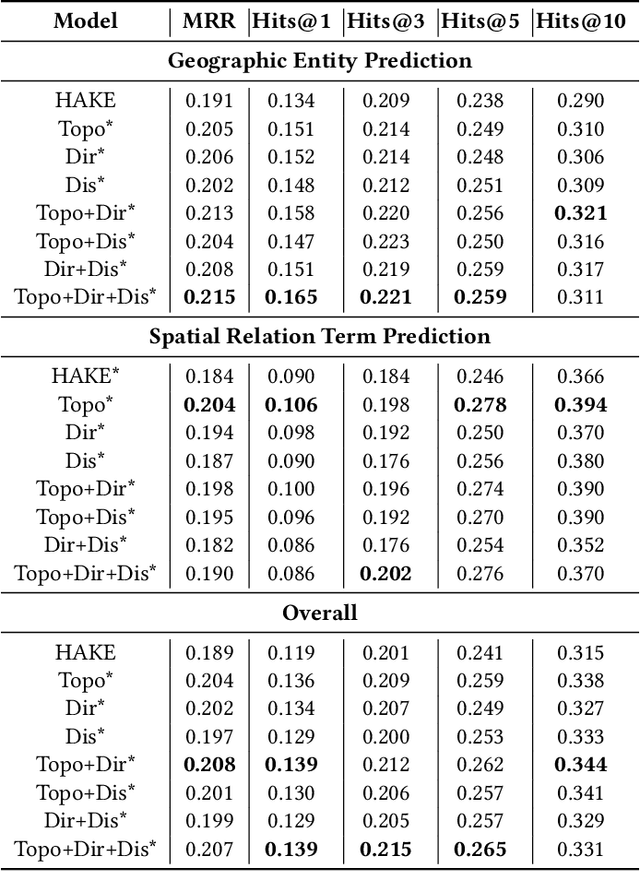Geometric Feature Enhanced Knowledge Graph Embedding and Spatial Reasoning
Paper and Code
Oct 24, 2024



Geospatial Knowledge Graphs (GeoKGs) model geoentities (e.g., places and natural features) and spatial relationships in an interconnected manner, providing strong knowledge support for geographic applications, including data retrieval, question-answering, and spatial reasoning. However, existing methods for mining and reasoning from GeoKGs, such as popular knowledge graph embedding (KGE) techniques, lack geographic awareness. This study aims to enhance general-purpose KGE by developing new strategies and integrating geometric features of spatial relations, including topology, direction, and distance, to infuse the embedding process with geographic intuition. The new model is tested on downstream link prediction tasks, and the results show that the inclusion of geometric features, particularly topology and direction, improves prediction accuracy for both geoentities and spatial relations. Our research offers new perspectives for integrating spatial concepts and principles into the GeoKG mining process, providing customized GeoAI solutions for geospatial challenges.
 Add to Chrome
Add to Chrome Add to Firefox
Add to Firefox Add to Edge
Add to Edge